Zoned varieties of tomatoes are varieties and hybrids adapted to specific climatic conditions. Tomatoes bred for the south will not produce a good crop in the northwest.
For cultivation in the Leningrad region created a little more than 40 varieties. Among them, you can choose the best not only in terms of yield, but also for different cultivation conditions: a polycarbonate greenhouse, film shelters or open ground.
Content
How to choose tomatoes for the Leningrad region
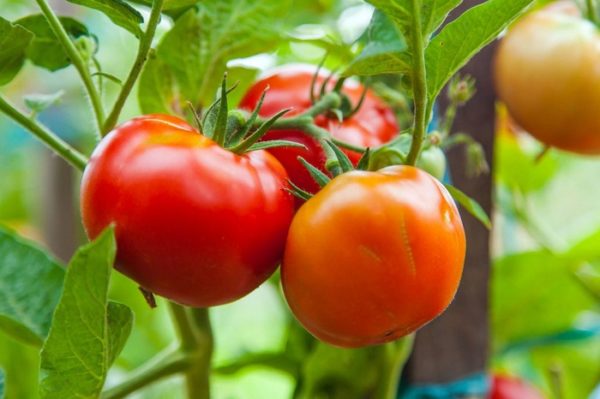 The area is characterized by frequent rainfall, high cloud cover and extended, cold spring. Return frosts can be observed in early June, the summer is short, the weather is unstable. The morning can be warm and sunny, rain will fall in the afternoon, and the evening will begin with a gusty wind that persists until the next day. Zoned tomato varieties for the Leningrad Region (1 zone) must withstand high humidity, short daylight hours, sharp changes in temperature, and wind.
The area is characterized by frequent rainfall, high cloud cover and extended, cold spring. Return frosts can be observed in early June, the summer is short, the weather is unstable. The morning can be warm and sunny, rain will fall in the afternoon, and the evening will begin with a gusty wind that persists until the next day. Zoned tomato varieties for the Leningrad Region (1 zone) must withstand high humidity, short daylight hours, sharp changes in temperature, and wind.
Summer residents who have the opportunity to grow crops in a greenhouse have nothing to worry about, and the owners of small gardens will have to equip greenhouses or organize film shelters. Varieties that are permissible to plant in open beds for this area are few. As in other regions of Russia, tomatoes are cultivated in seedlings, but with one prerequisite - seedlings need to be hardened.
In addition to the ripening period and immunity to negative factors, gardeners pay attention to such characteristics as yield and fruit size. Large tomatoes in unheated greenhouses, hotbeds, in open beds do not have time to fully mature before a significant fall in temperature. Some fruits do not even reach technical maturity, which makes them unsuitable for ripening and salting (unpleasant bitterness remains).
Harvest tomatoes for the Leningrad region: varieties and hybrids
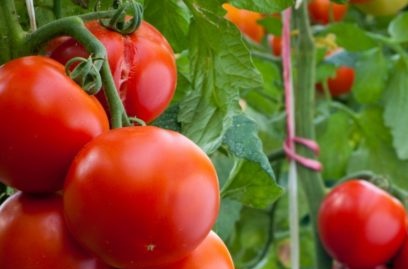
It is clear which tomato varieties to choose for the risky farming zone, but in order to single out at least a few successful options for yourself, you need to browse through many sites and thematic forums. It takes a lot of time, information is not always reliable. To make it easier for you to decide, we have collected several selections of the best, proven tomatoes for the northwest.
Varieties for open beds
To begin with, we note an important nuance, any varieties of tomatoes in the northwest can not be grown without protection. Shelter will be needed immediately after landing and closer to the end of summer. It is necessary to monitor the weather throughout the growing season of the culture. When determining the height of supports (arcs, rods, etc.) for polyethylene, the characteristics of an adult bush should be taken into account.
Dwarf 1185
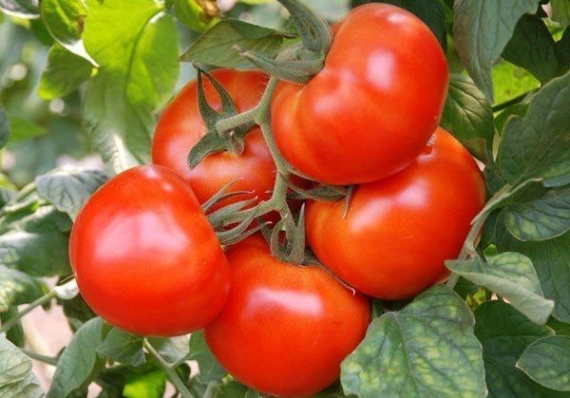 Varietal tomato ripening 96–115 days after seed hatching. The bushes are low, neat, stump, do not need garter and pinching.The first inflorescences are laid over 5 or 8 leaves, subsequent every 2-3 leaves. An unpleasant feature of the variety is the complete lack of immunity to late blight, in the climatic conditions of the Leningrad Region, regular treatments with copper-containing preparations are required.
Varietal tomato ripening 96–115 days after seed hatching. The bushes are low, neat, stump, do not need garter and pinching.The first inflorescences are laid over 5 or 8 leaves, subsequent every 2-3 leaves. An unpleasant feature of the variety is the complete lack of immunity to late blight, in the climatic conditions of the Leningrad Region, regular treatments with copper-containing preparations are required.
The first crop was harvested in early August, the dwarf's fertility is slightly inferior to other productive varieties, it is about 3.5 kg / sq. m. Tomatoes are oval-round, bright red, dense, juicy 50–70 grams. The purpose is universal, the taste is pleasant, sour-sweet, the aroma is saturated. The peel is dense, the fruits are characterized by keeping quality and transportability.
White filling
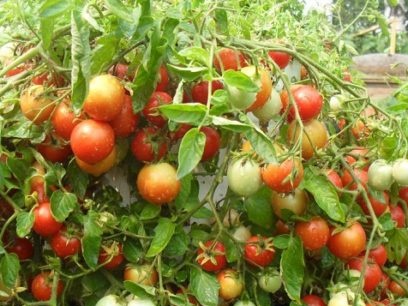 An early ripe variety recommended for fresh use, but also suitable for preservation. The bush is determinant, not higher than 80 cm, average in density. Resistance to high humidity, cold snap is excellent. In short daylight conditions, the variety bears fruit very well. Immunity to major diseases, pests at a high level, in addition to late blight.
An early ripe variety recommended for fresh use, but also suitable for preservation. The bush is determinant, not higher than 80 cm, average in density. Resistance to high humidity, cold snap is excellent. In short daylight conditions, the variety bears fruit very well. Immunity to major diseases, pests at a high level, in addition to late blight.
Fruits are rounded, slightly ribbed, red at 75-150 grams. Seed chambers from 5 to 12, they are small, the average number of grains. The skin is dense, but not stiff, glossy. The taste is good, rich, sweet with a slight acid. Tomatoes are well tolerated, stored for a long time, have excellent presentation (up to 95% of those harvested for the entire season). Productivity from one bush from 3, 5 to 4 kilograms.
Yamal
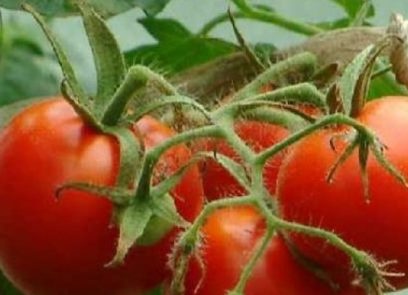 The variety ripens in the early stages, salad direction, suitable for whole-canning. The bush is standard, determinant, neat, does not take up much space on the bed, is not afraid of light shading. The variety is resistant to negative weather factors (including drought), endowed with excellent immunity to root, apical rot and pests.
The variety ripens in the early stages, salad direction, suitable for whole-canning. The bush is standard, determinant, neat, does not take up much space on the bed, is not afraid of light shading. The variety is resistant to negative weather factors (including drought), endowed with excellent immunity to root, apical rot and pests.
Tomatoes are flat-round with light ribbing, sometimes uneven, bright red, average weight 85 grams, there are smaller, larger specimens. There are about 4–6 seed chambers, a lot of seeds. The taste is very good, sweet with barely noticeable acid, the aroma is saturated. The peel is dense but not stiff; ripe fruits do not crack. Productivity is about 5 kg / sq. m
Siberian precocious
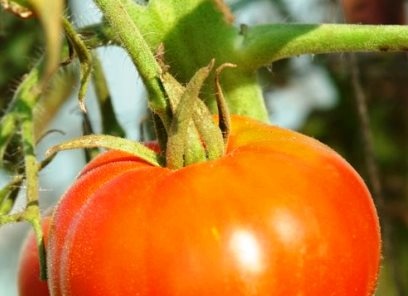 Fruits ripen in 95–110 days after seed hatching (early term). The plant is determinant, up to 80 cm tall, under the film can grow up to 100 cm. The variety is highly resistant to low temperatures, excessive humidity, short daylight hours, and does not tolerate prolonged dry periods. Immunity to diseases, pests increased.
Fruits ripen in 95–110 days after seed hatching (early term). The plant is determinant, up to 80 cm tall, under the film can grow up to 100 cm. The variety is highly resistant to low temperatures, excessive humidity, short daylight hours, and does not tolerate prolonged dry periods. Immunity to diseases, pests increased.
Fruits are red, spherical or flat-round, slightly ribbed on the entire surface from 60 to 130 grams. The taste is sweet and sour, pleasant, but it can not be called bright and saturated, rather fresh, the aroma is weak. Tomatoes are more suitable for canning, pickling. Nests no more than 4, the average number of seeds, juicy pulp, loose. Productivity is about 4 kg / sq. m
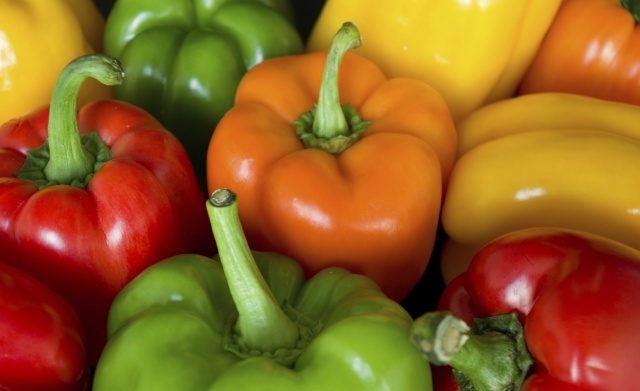 You may be interested in:
You may be interested in:Baltic
Bushes are determinant, but require mandatory garters and pruning (stepsons, leaves). The variety ripens in the early stages, is very rarely affected by pests, is not susceptible to fungal and viral diseases. Immunity persists even with severe damage to neighboring plants. Baltic is well developed, bears fruit even in rainy, cool, cloudy summers.
Tomatoes are red, flat-round, slightly ribbed, loose, with an average weight of 150 grams. There are practically no trifles on the bushes, often about 300 grams of fruit ripen.4–6 seed chambers, average number of grains. The pulp is juicy, not watery, without granularity, the skin is thin and soft. The taste is excellent, sweet with a barely noticeable acid, the aroma is saturated. Productivity up to 5 kg / sq. m
Northern beauty
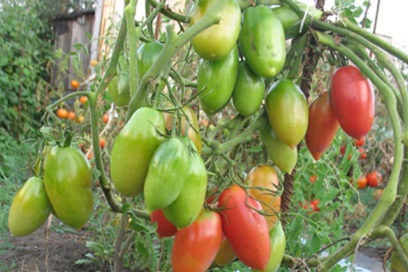 Variety salad direction, ripening in the medium term. Bushes are indeterminate, require garter and haircuts, to get a good crop, it is better to plant a plant in 2 or 3 stems. The variety bears fruit well in seasons with adverse weather, tolerates heat and drought. Immunity to pests is good, to Fusarium and the tobacco mosaic virus at a high level.
Variety salad direction, ripening in the medium term. Bushes are indeterminate, require garter and haircuts, to get a good crop, it is better to plant a plant in 2 or 3 stems. The variety bears fruit well in seasons with adverse weather, tolerates heat and drought. Immunity to pests is good, to Fusarium and the tobacco mosaic virus at a high level.
Ripe pink tomatoes, sometimes with a dark raspberry stain on the stalk, are pear-shaped. The skin is smooth, loose, flesh of a pleasant consistency, juicy, soft. There are no more than 3 seed chambers, few seeds. The average weight of the fruit is 60–150 grams. The taste is sweet, sometimes with sourness, salad, suitable for canning, making juices. Productivity is about 4.5 kg / sq. m
Varieties of tomatoes for greenhouses and greenhouses
Here are harvested varieties of tomato for greenhouses and hotbeds of any type (including film-coated). In such conditions, plants need to be given as much attention as possible, to ensure that there are no weeds on the beds, to ventilate the room, to carry out bush cutting and preventive treatments. In heated greenhouses, tomatoes can be grown all year round, but only with a good system of additional lighting.
Soil Gribovsky
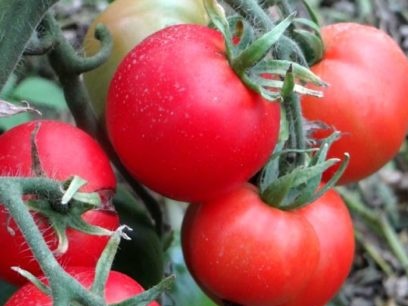
The fruits ripen in 95–115 days after the emergence of friendly sprouts, it is recommended for the preparation of various dishes and juices that turn out to be thick. The bush is determinant (up to 60 cm in height), semi-spreading, neat. Immunity to diseases and pests typical of the culture is increased; in cloudy, rainy summers, a decrease in productivity is not observed.
Tomatoes are bright red, flat-round with a slightly ribbed surface from 60 to 110 grams. There are no more than 4 seed chambers, few grains. The skin is of medium density, the pulp is quite dense, juicy, the taste is most often described as satisfactory or good, it is balanced, sweet and sour. The aroma is very fresh, almost imperceptible. Productivity up to 4 kg / sq. m
Leningrad precocious
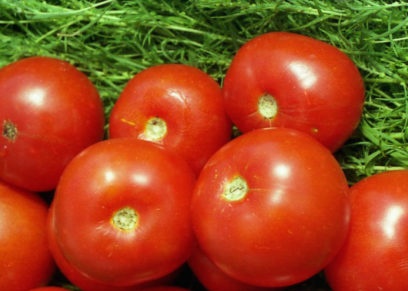 The plant is standard, the maximum height is 30 cm (in the greenhouse up to 80 cm), while planting is better not to thicken, the bushes should be well ventilated from all sides. It is recommended to plant no more than 6 seedlings per square meter of land. The ripening period is mid-early; by mid-August, the variety gives up the entire crop. Immunity to negative factors (bad weather, diseases, pests) is excellent.
The plant is standard, the maximum height is 30 cm (in the greenhouse up to 80 cm), while planting is better not to thicken, the bushes should be well ventilated from all sides. It is recommended to plant no more than 6 seedlings per square meter of land. The ripening period is mid-early; by mid-August, the variety gives up the entire crop. Immunity to negative factors (bad weather, diseases, pests) is excellent.
Tomatoes are spherical, uniform, in a removable maturity of saturated red color at 45–65 grams. The skin is dense, but is almost not felt when eating. The variety is not prone to cracking and overripe, the fruits are stored for a long time, do not deteriorate during transportation. The taste is sometimes freshish, but most often it is good, balanced, sweet and sour. Productivity is about 10–13 kg / sq. m
 You may be interested in:
You may be interested in:Ural Multiple
The variety ripens in the medium terms, the bush is indeterminate, powerful, requires mandatory garter and pinching. To obtain an abundant, high-quality crop, the plant must be kept in 2 stems. The fruits are suitable for fresh consumption, cooking homemade food, canning. Resistance to pests is weak, and to diseases excellent, the variety tolerates heat and cold equally well.
Tomatoes are red, flat-round and spherical with light ribbing. The fruit mass can be from 60 to 120 grams, more often the bush is strewn with medium-sized tomatoes (70–80 grams).The pulp is tender and juicy, while the fruits are quite dense, the skin is stiff, does not crack, it is weak when eating, the taste is good. Productivity is very high, in years with favorable weather it is about 15 kg / sq. m
Leningrad autumn
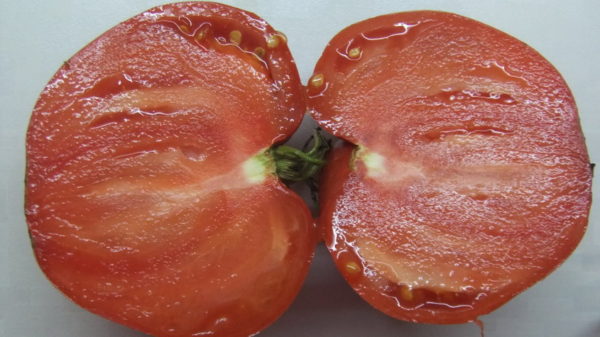 The variety ripens in the middle period, the plant is indeterminate, powerful, tall, requires pinching and shearing. When the bush grows to 130-150 cm, it is better to pinch the top so that all the forces go into the fruit. Immunity to pests and brown spotting is excellent, but the plant is highly susceptible to infection by the tobacco mosaic virus. Preventive treatments with folk remedies and biological products are best carried out throughout the growing season.
The variety ripens in the middle period, the plant is indeterminate, powerful, tall, requires pinching and shearing. When the bush grows to 130-150 cm, it is better to pinch the top so that all the forces go into the fruit. Immunity to pests and brown spotting is excellent, but the plant is highly susceptible to infection by the tobacco mosaic virus. Preventive treatments with folk remedies and biological products are best carried out throughout the growing season.
Fruits are spherical or flat-round, slightly uneven from 50 to 160 grams. The taste is very good, sweet with a pleasant, light acid. The pulp is juicy, tender without granularity, the skin is dense, but not stiff. The variety is universal in use, but not suitable for drying, partially freezes taste when frozen. Tomatoes are well knotted in low light, yield up to 6 kg / sq. m
Fox
A variety of medium early ripening, for whole-canning and salads. Bushes are indeterminate, tall, require pruning, shaping and garter. Resistance to temperature extremes is excellent, the variety bears fruit well in cloudy weather. Immunity to the most common diseases of the culture is increased.
Fruits are obovate or oval, with full ripening, orange from 100 to 150 grams. Seed chambers no more than 3, the average number of seeds. The taste is very good, sweet with a slight acidity and a rich tomato aroma. The pulp is moderately dense, juicy, the skin is practically not felt and does not crack. Productivity with proper care 9, 5 kg / sq. m
Palace
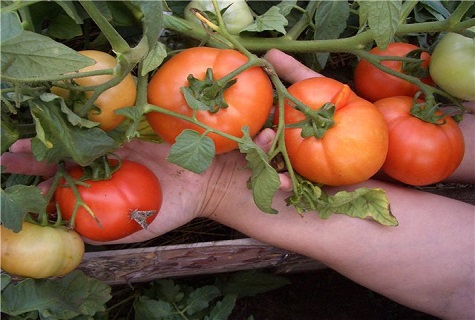 Early ripe, indeterminate variety, requires garter and haircut. Immunity to adverse weather factors and diseases is good. Appointment salad, tomatoes are suitable for cooking homemade dishes, juices, pastes, ketchups, as well as for preservation. Fruits are flat-round, red 200-350 grams. The taste is good, sweet with barely noticeable acid. There are no more than 9 seed chambers, few seeds, juicy flesh. The skin is dense, but not stiff, cracking only with strong over-ripening. Productivity up to 14.5 kg / sq. m
Early ripe, indeterminate variety, requires garter and haircut. Immunity to adverse weather factors and diseases is good. Appointment salad, tomatoes are suitable for cooking homemade dishes, juices, pastes, ketchups, as well as for preservation. Fruits are flat-round, red 200-350 grams. The taste is good, sweet with barely noticeable acid. There are no more than 9 seed chambers, few seeds, juicy flesh. The skin is dense, but not stiff, cracking only with strong over-ripening. Productivity up to 14.5 kg / sq. m
Many gardeners call the leaders in productivity such varieties and hybrids as Olya, Verlioca, Ural and De barao. They bear fruit well in almost any growing conditions, have increased immunity to the most common diseases and harmful insects. Truly good results can be achieved only by observing the rules of agricultural technology.
When to sow seeds for seedlings in the Leningrad region
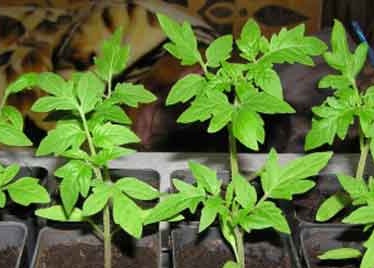 To determine the time of sowing seeds, you need to pay attention to the fact that seedlings that are not less than 50 days are considered ready for planting. It is worth considering that the germination of seeds will take about 4 days. A transplant into the closed ground and under the film can be carried out after June 1. It turns out that the early variety must be sown 57 days before the intended date of planting, this is approximately April 6–9.
To determine the time of sowing seeds, you need to pay attention to the fact that seedlings that are not less than 50 days are considered ready for planting. It is worth considering that the germination of seeds will take about 4 days. A transplant into the closed ground and under the film can be carried out after June 1. It turns out that the early variety must be sown 57 days before the intended date of planting, this is approximately April 6–9.
If the crop is planned to be planted in unprotected soil, the favorable period will be the second decade of June, when there is no longer any risk of return frosts. You can sow seeds from the last days of March to April 5. In the northern parts of the Leningrad region, crops (for any growing conditions) are carried out a week later. Tomatoes can be planted in a permanent place when the soil warms up to 12 degrees, and the average daily temperature for 7 days will remain within 12-15 degrees.
Growing tomatoes in the Leningrad Region is no longer a problem; anyone, even a beginner gardener, can cope with the task.In the open ground in the northwest it is better to plant exclusively zoned varieties that are fully adapted to the climate. We described time-tested options that consistently produce good yields. We recommend that you take a closer look at such varieties and hybrids as Sanka, Mithridates, Baron, Gina, Amber, Ballad and the Leningrad chill.
Reviews
Andrey, Pervomaisky
When he moved from south to northwest, Leningradsky was the first to select an early ripe tomato, his description is very tempting. I was not disappointed, I planted most of the bushes in the greenhouse, left 4 seedlings on the street. All gave a good harvest, were not sick. Last year, looking at the recommended tomato seeds for the Leningrad region, I chose Chanterelle and Baltic. I did not keep track of the bushes a little, they grew very much, I had to cut some of the branches, nibbled the rest. Oddly enough, almost all the fruits managed to ripen before the start of autumn.
Christina, St. Petersburg
The best, high-yielding varieties of tomatoes for the Leningrad Region are Palace, Ural Multiple, Soil Gribovsky, Baltic and White filling. In unprotected beds, I plant only the last variety. Despite the fact that these varieties are not moody, I recommend that you follow the basic rules so that they bear fruit well. It is necessary to ventilate the greenhouse daily, loosen the soil, regularly feed the bushes and do not forget about preventative treatments.

 Low-growing tomatoes, without pinching: 5 of the most delicious varieties
Low-growing tomatoes, without pinching: 5 of the most delicious varieties Why tomato seedlings grow poorly
Why tomato seedlings grow poorly We grow a tomato in a shell
We grow a tomato in a shell Growing tomatoes without watering according to the method of Kazarin
Growing tomatoes without watering according to the method of Kazarin